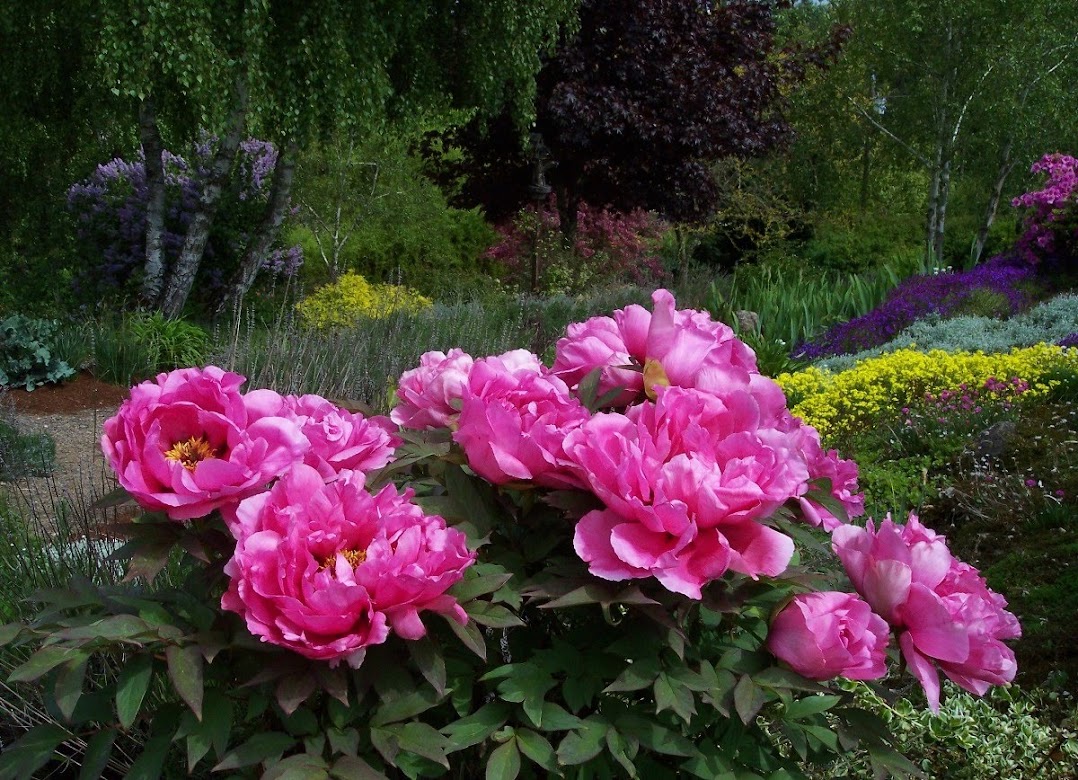The photos do some justice to the actual blossom…unmatched beauty in color, and when I see the tree in full bloom, all I can think of is ‘HOT’!
As we start down the path the blue and purple Columbine (Aquilegia) which have freely seeded, cover the area beneath one of our birch trees. Do enjoy the fragance of the lilac while stopping for a moment to look at the rich purple red foliage of this great maple, Acer Platanoides 'Crimson King'.
moment to look at the rich purple red foliage of this great maple, Acer Platanoides 'Crimson King'.
The sloping field below is home for the three Malus 'Prairifire'. These 15-20’ trees, rounded in habit, requiring little or no maintenance, do not drop their fruit, and clearly are quite the showstopper this time of year, a beautiful addition to any garden.
April brings forth their “fire” to the landscape, summer yields reddish green foliage, the fall transforms it into red and orange, and the red berries of fall and winter offer the birds a feast...the bark, a glossy dark reddish brown.

As we approach the bottom of the path let us turn right. The towering Cedrus Deodara can be seen in the distance, while the Ligustrum x vicaryi aurea (privet) nestles beneath the Malus.

A closer look says these two may have something going on. :)
 Shall we walk beyond the Cedrus Deodara and then turn back for yet another view and a
Shall we walk beyond the Cedrus Deodara and then turn back for yet another view and a wonderful surprise, Sequoiadendron giganteum 'Pendulum'. Don't you just love the weeping whimsical stature of this Sequoia? Reminds me of Dr. Seuss.
wonderful surprise, Sequoiadendron giganteum 'Pendulum'. Don't you just love the weeping whimsical stature of this Sequoia? Reminds me of Dr. Seuss.We hope you have found something to enjoy during this evening's walk. Thank you for coming to see us.



